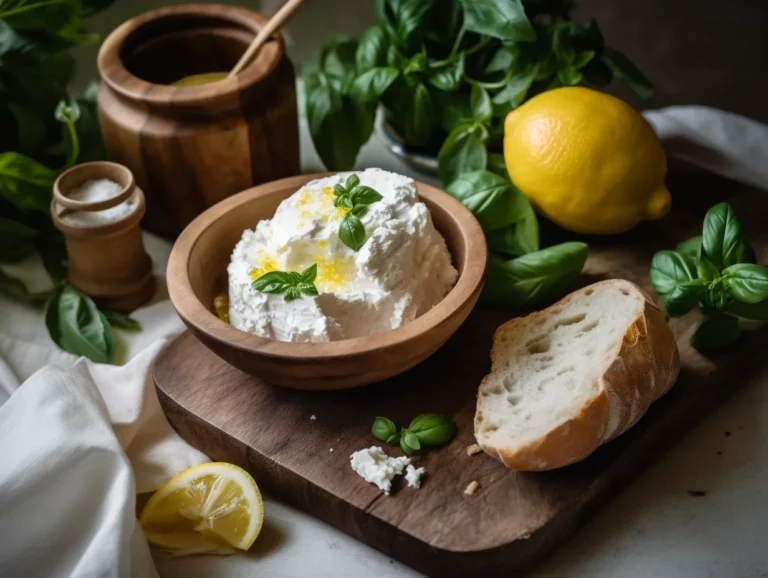Whether you’ve spread it on warm toast, whipped it into a creamy dessert, or layered it into lasagna, ricotta cheese has likely stolen a place in your heart—and your fridge. This incredibly versatile Italian cheese isn’t just delicious; it’s also packed with protein, calcium, and flavor that fits both sweet and savory dishes. In this article, we’ll dive deep into everything you need to know about ricotta cheese—from its origin and health perks to the best recipes and storage tips. Along the way, we’ll tackle FAQs, expert kitchen advice, and even highlight the best store-bought brands. So, if you’re wondering what makes ricotta cheese so special, you’re in the right place.
What is Ricotta Cheese?
Origin and Meaning of Ricotta
Let’s start at the beginning—where did ricotta cheese come from? The word “ricotta” literally means “recooked” in Italian. That’s because traditional ricotta is made by reheating the whey left over from other cheese-making processes, especially from hard cheeses like Parmesan. By adding acid and applying heat to this leftover liquid, delicate curds form. These are then strained and turned into the fluffy white cheese we all know and love.
Dating back to Roman times, ricotta cheese has deep roots in Italian culinary history. Over the centuries, it evolved from a humble byproduct to a staple ingredient in everything from classic Italian dishes to modern ricotta desserts.
Traditional vs Modern Production Methods
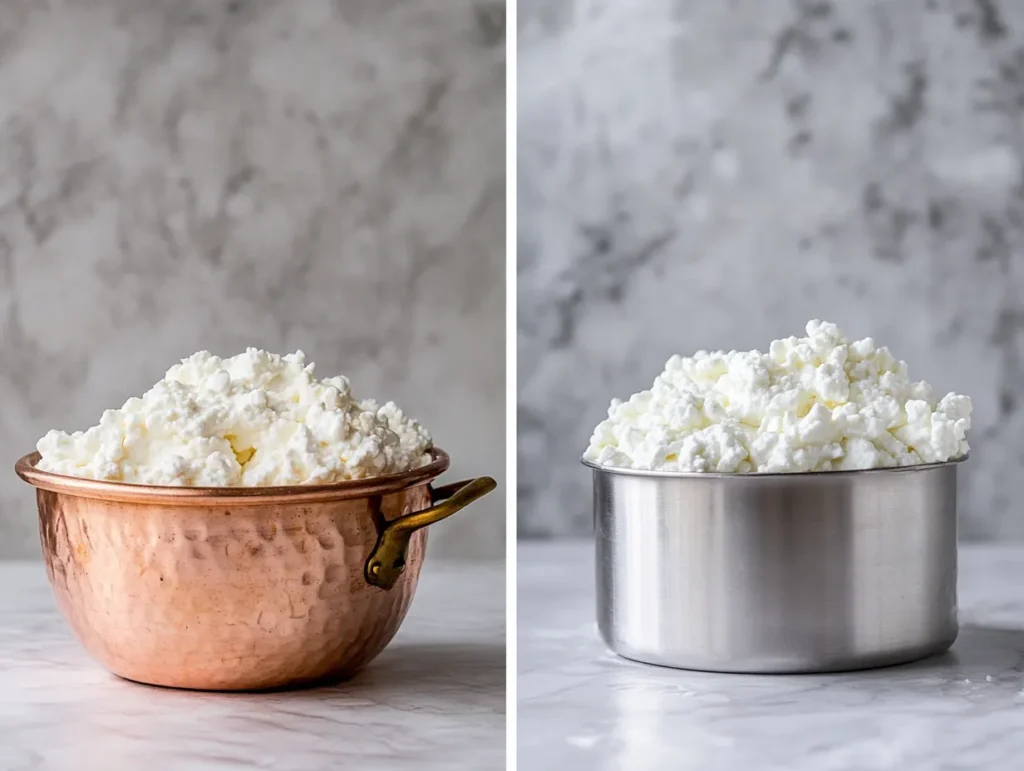
Today, there are two main ways ricotta is made: the old-school method with whey and the modern one using whole milk or skim milk. In traditional cheesemaking, the whey is reheated—hence the term “twice cooked”. But most commercial ricotta today skips the whey and uses milk directly, mixed with acid like lemon juice or vinegar.
Modern versions tend to be creamier and richer, thanks to higher fat content. However, this shortcut also means many store-bought versions add gums or stabilizers to mimic that fresh, fluffy texture. If you’re aiming for the real deal—especially for baking—go for fresh ricotta from a local dairy or make it at home.
Texture, Flavor, and Culinary Role
So what should ricotta cheese taste like? Ideally, it’s mild, sweet, and slightly grainy—but not gritty. The texture should be light and creamy, never rubbery or watery. It’s this gentle flavor and versatility that makes it perfect for both savory dishes like lasagna or stuffed shells, and sweets like cheesecakes or cannoli.
In a word, ricotta cheese is a culinary chameleon—one that deserves a starring role in your kitchen.
Types of Ricotta Cheese and How to Choose the Best
Whole Milk vs Skim Ricotta: Which to Pick?
Choosing between whole milk ricotta and skim milk ricotta cheese can make or break your dish. Whole milk versions are undeniably creamier, offering a richer texture that works beautifully in baked dishes like lasagna and ricotta cheesecakes. On the flip side, skim milk ricotta is lower in fat and calories, making it a popular pick for those keeping an eye on their macros—but it can taste a bit chalky and feel dry if not used correctly.
When in doubt, reach for whole milk ricotta cheese for taste and texture. The fat adds depth, especially when your recipe depends on a smooth, luscious consistency.
Fresh, Packaged, and Vegan Ricotta Options
Fresh ricotta, typically found at local dairies or specialty markets, is hands-down the gold standard. It’s often made using the traditional whey method, giving it that slightly sweet flavor and cloud-like texture. If you’re lucky enough to snag a fresh batch—grab it.
Packaged ricotta cheese is more accessible, but not all brands are equal. Watch out for stabilizers and gums on the ingredient list. These can help with shelf life but often compromise texture, especially in baked dishes.
For dairy-free eaters, vegan ricotta is now a thing! Made from nuts like almonds or cashews, or even tofu, it’s a solid choice for lasagna or dips—but don’t expect it to replace real ricotta cheese in Italian desserts.
Curious how different brands rank? Serious Eats ran a test, and Calabro topped the charts for its fresh flavor and minimal additives—definitely a brand to consider!
Nutritional Value and Health Benefits of Ricotta Cheese
Key Nutrients: Protein, Calcium, and Fats
Let’s talk nutrition. Ricotta cheese isn’t just delicious—it’s surprisingly nourishing. A half-cup serving packs around 14 grams of protein, making it an excellent option for anyone trying to boost their intake. You’ll also get a healthy dose of calcium, which is great for bones, along with B vitamins like riboflavin and vitamin A.
Depending on whether you’re using whole milk or skim milk ricotta, the fat content can vary. Whole milk ricotta provides more saturated fat, which helps with satiety and flavor but should be consumed in moderation. Skim varieties, meanwhile, offer lower fat and calorie counts—perfect for light meals.
What makes ricotta stand out nutritionally is that it’s made from whey or milk, both of which are rich in bioavailable protein. It’s easy to digest and can work as a post-workout snack, especially when paired with fruit or whole grains.
Healthier Alternative to Other Cheeses?
Compared to cheeses like cheddar or cream cheese, ricotta cheese comes off as a lighter, less salty option. It’s lower in sodium and cholesterol, and you’ll find far fewer additives if you go with a clean, minimally processed brand. This makes it an ideal cheese for those managing blood pressure or watching their heart health.
Bonus? Ricotta’s soft, moist texture means it’s satisfying in smaller amounts. Whether you’re baking, blending, or simply spooning it on toast, it’s a smart and tasty choice.
How to Use Ricotta Cheese in Cooking
Popular Dishes: Pasta, Lasagna, Stuffed Shells
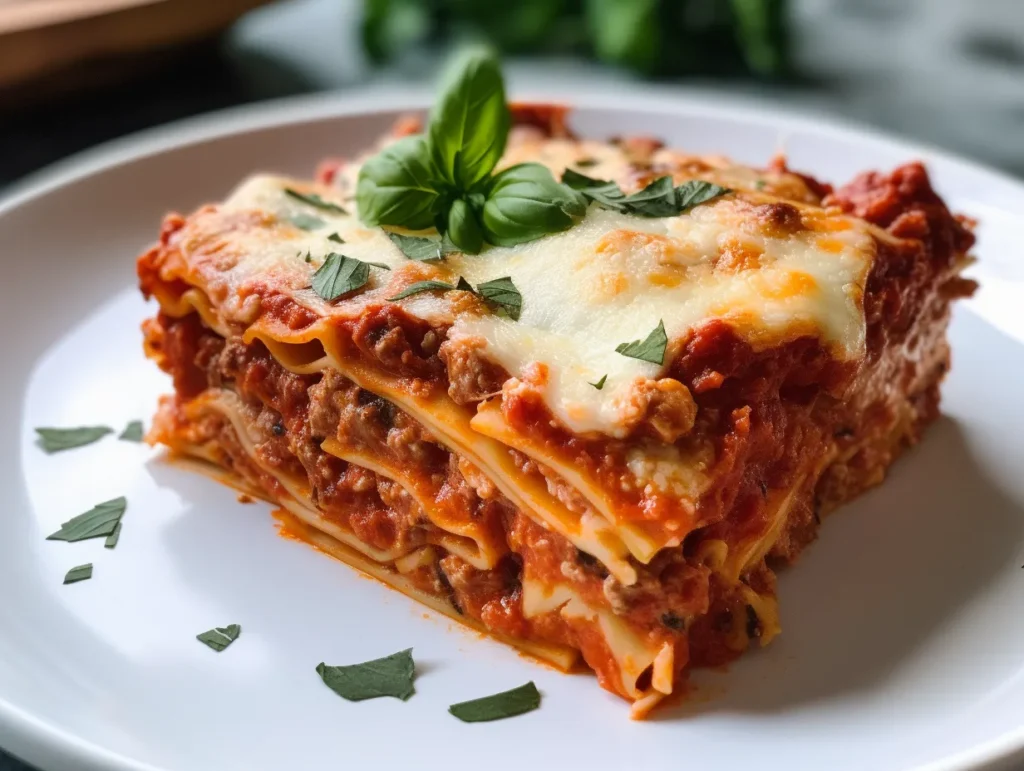
When it comes to comfort food, ricotta cheese is a star ingredient. One of the most iconic dishes that relies heavily on it? Lasagna. A generous layer of ricotta cheese between noodles gives lasagna that rich, creamy bite we all crave. Whether you’re making a meat-packed classic or a vegetarian lasagna, ricotta brings balance and smoothness to the dish.
Equally loved are stuffed shells with ricotta cheese. These jumbo pasta shells get packed with a mix of ricotta, spinach, and herbs, then smothered in tomato sauce and baked until bubbly. Yum!
Pasta isn’t the only place where this cheese shines. Toss a spoonful into hot penne or gnocchi with roasted veggies, and you’ve got a quick, satisfying meal.
Savory Recipes Using Ricotta Cheese
Looking to shake things up? Use ricotta cheese in savory spreads and dips. Whip it with olive oil, garlic, and lemon zest for a tasty topping for toast or crackers. Or mix it into scrambled eggs to make them extra fluffy.
It also works well in savory tarts and quiches. Because ricotta holds its shape when baked, it provides body and creaminess without turning greasy.
Ricotta also partners beautifully with roasted veggies, chicken, or even pizza. Just dollop a spoonful on top of a warm crust—perfection!
Sweet Treats: Ricotta Cheesecake and Cannoli
Don’t let ricotta’s savory reputation fool you—it’s also perfect in sweets. From ricotta cheesecake to cannoli, this cheese gives desserts a light, delicate texture.
Italian-style cheesecake made with ricotta cheese has a softer crumb than its cream cheese cousin. It’s less dense, slightly tangy, and often flavored with citrus or honey.
Cannoli, the crispy Italian pastry tubes, are traditionally filled with a sweetened ricotta mix—sometimes with mini chocolate chips or candied orange peel. If you’ve never tried making these at home, it’s easier than you’d think.
Best Ricotta Cheese Recipes You’ll Love
Classic Lasagna Recipe with Ricotta Cheese
Let’s kick things off with the ultimate comfort dish—lasagna with ricotta cheese. To make it unforgettable, layer cooked noodles with a rich meat or veggie sauce, shredded mozzarella, grated Parmesan, and plenty of seasoned ricotta. Add a pinch of nutmeg or fresh basil to the ricotta mix for a subtle flavor lift. Bake until golden and bubbly.
This dish freezes well, so it’s perfect for meal prep or feeding a crowd.
Stuffed Shells with Ricotta and Spinach
Another Italian classic: stuffed shells with ricotta cheese. Blend ricotta with chopped spinach, garlic, and egg to hold it together. Spoon the mixture into cooked pasta shells, place them in a baking dish, and pour marinara sauce over the top. A sprinkle of mozzarella seals the deal.
Want to impress dinner guests without too much fuss? This is the recipe to keep in your back pocket.
Quick Pasta Dishes Using Ricotta Cheese
Short on time? Stir a few spoonfuls of ricotta cheese into warm pasta for an instant creamy sauce. Add lemon zest, black pepper, and a drizzle of olive oil to finish. This trick works with almost any pasta shape and makes even plain noodles feel special.
Toss in some peas, roasted cherry tomatoes, or leftover chicken for a hearty, weeknight-ready dish.
Homemade Ricotta Cheese Recipe
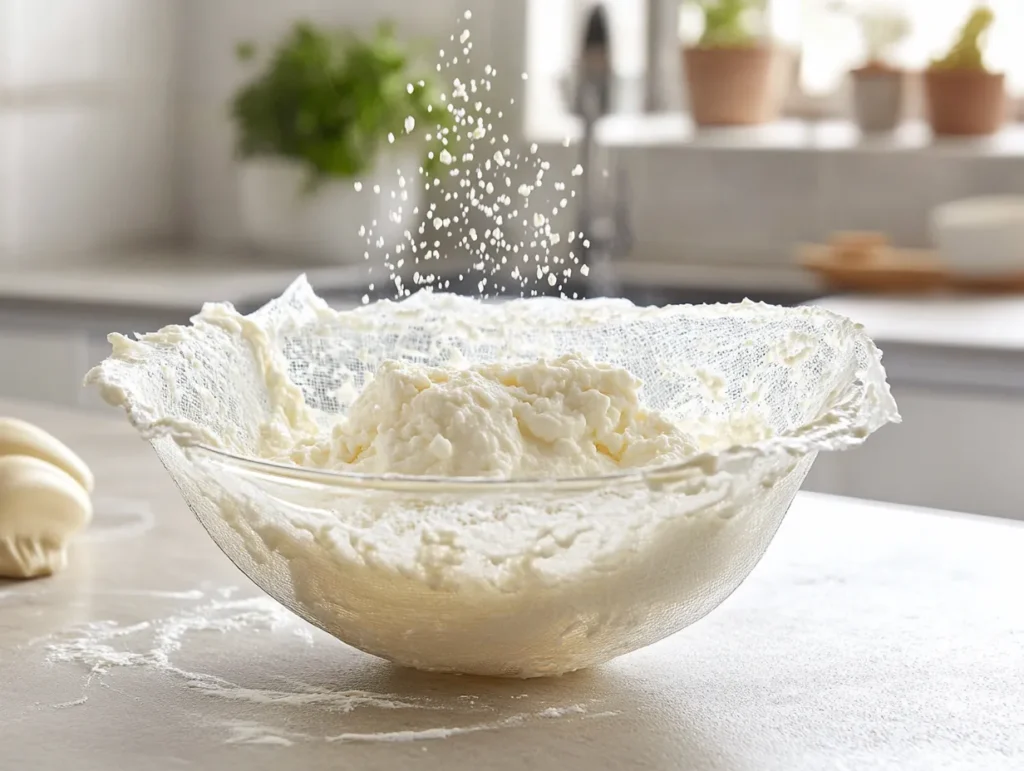
Here’s a surprise: you can make ricotta cheese at home with just four ingredients—milk, vinegar or lemon juice, salt, and time. Heat the milk, stir in the acid, and watch it curdle into soft, fluffy goodness. Drain it with cheesecloth, and voilà! You’ve got homemade ricotta that’s fresher and creamier than anything store-bought.
Homemade ricotta is fantastic in all the dishes above, and it makes a mean spread for toast with honey and sea salt.
For more tasty dinner ideas, don’t miss the other recipes in our Dinner section.
Storage Tips and Shelf Life of Ricotta Cheese
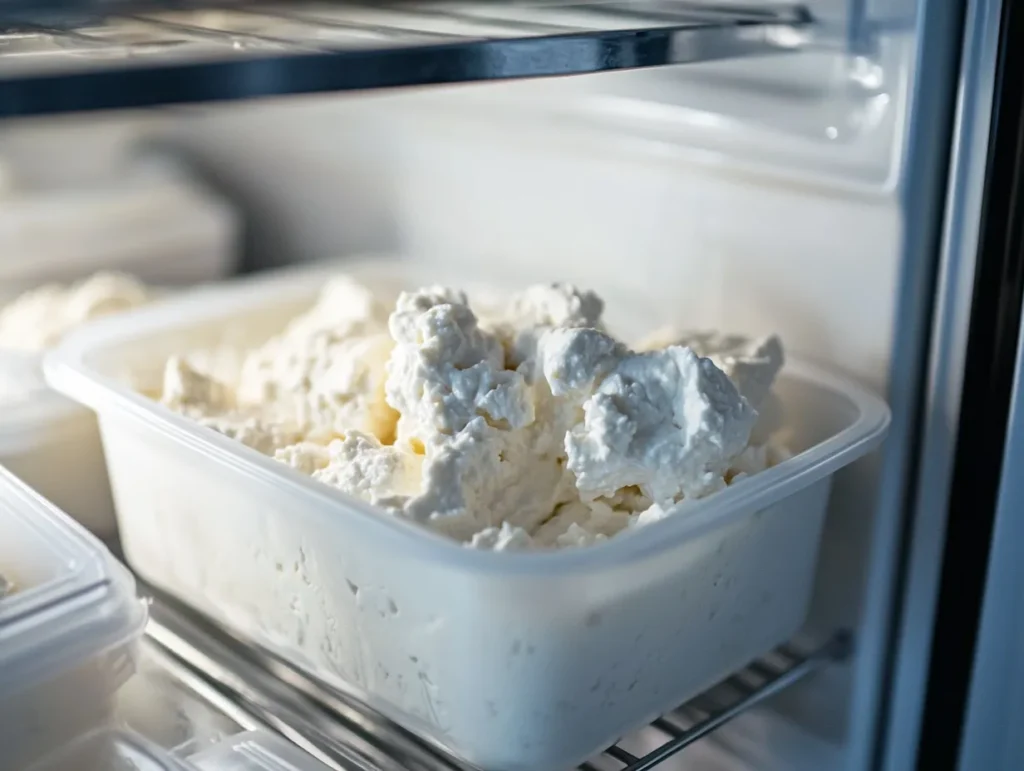
How to Store Fresh and Packaged Ricotta
Storing ricotta cheese the right way helps keep it fresh, tasty, and safe to eat. Whether it’s store-bought or homemade, this soft cheese is quite delicate and can spoil quickly if not handled properly.
If you’ve opened a tub of ricotta cheese, always reseal it tightly or transfer it to an airtight container. Then, store it in the coldest part of your fridge—typically near the back. For fresh, homemade ricotta, make sure it’s completely cooled before storing and use it within 2–3 days for the best flavor and texture.
You can even drain the extra whey using a cheesecloth or fine sieve before storing. This prevents sogginess and keeps the ricotta creamy longer.
Although it’s not ideal, you can freeze ricotta cheese. Just be warned—it may lose its smooth texture and turn slightly grainy after thawing. To freeze, place it in a freezer-safe bag, press out air, and use within a month. It works best in cooked dishes after freezing.
How Long Does Ricotta Cheese Last?
Ricotta cheese has a short shelf life, especially once opened. Unopened store-bought ricotta can last about a week past the “sell-by” date, if kept cold. But once opened, aim to use it within 5–7 days.
Always check for signs of spoilage—sour smell, yellowing, or mold are clear red flags. When in doubt, toss it out!
To extend freshness, avoid cross-contamination by using a clean spoon each time. With the right care, your ricotta will stay fresh, flavorful, and ready for your next delicious recipe.
Common Mistakes When Cooking with Ricotta Cheese

Avoiding Grainy Texture in Bakes
Baking with ricotta cheese can be tricky if you’re not careful. One common mistake? Skipping the draining step. Ricotta contains a good amount of moisture, and too much water in your mix can lead to a grainy texture or soggy dish.
Before using ricotta in bakes like lasagna or cheesecake, place it in a strainer lined with cheesecloth or paper towels for at least 30 minutes. This simple step makes a big difference in the final texture.
Why Draining Ricotta Matters
Too much moisture doesn’t just ruin texture—it can throw off the whole recipe. Your dish might not set properly, or it may weep liquid after baking. Yikes!
Draining also helps concentrate flavor. Whether you’re using ricotta cheese in stuffed shells or a dip, a firmer, drier cheese gives you better control and tastier results.
Next time, take the extra step to prep your ricotta—it’s totally worth it!
Frequently Asked Questions (FAQs)
What’s the difference between ricotta and cottage cheese?
Though they may look similar, ricotta cheese and cottage cheese are quite different. Ricotta has a finer, creamier texture and a slightly sweet, mild flavor. Cottage cheese is lumpier and saltier, often containing curds in a creamy base. While both are used in cooking, ricotta is usually the go-to for Italian recipes like lasagna, cannoli, and stuffed shells.
Can I freeze ricotta cheese?
Yes, but only if you’re okay with a small trade-off in texture. Freezing ricotta cheese causes it to separate slightly, making it less creamy once thawed. For best results, freeze it in an airtight container and use it later in cooked dishes like casseroles or baked pasta, where texture changes won’t matter much.
Is ricotta cheese good for weight loss?
It can be! Ricotta is rich in protein, which helps keep you full. Choose low-fat or part-skim versions to cut down on calories and saturated fat. Paired with veggies or whole grains, ricotta cheese can be a smart addition to a balanced diet.
Is ricotta cheese pasteurized?
Most commercially sold ricotta cheese is pasteurized, especially in the U.S. However, always check the label if you’re pregnant or immunocompromised. When in doubt, stick to trusted brands or make your own at home with pasteurized milk.
People Also Ask (PAA)
What can ricotta cheese be used for?
Ricotta cheese is incredibly versatile. Use it in lasagna, pasta bakes, savory tarts, and even pancakes. It’s also delicious whipped with honey for desserts or spread on toast for a quick snack.
What is the difference between ricotta and cottage cheese?
Though they share a soft texture, ricotta cheese is smoother and slightly sweet, while cottage cheese is chunkier and tangier. Ricotta is often used in Italian cuisine, while cottage cheese is more common in salads or as a protein snack.
Can you eat ricotta cheese by itself?
Absolutely! Ricotta cheese can be enjoyed straight from the spoon. Sprinkle it with a little salt, pepper, or honey for a simple, satisfying treat.
How do you store ricotta cheese after opening?
Store opened ricotta cheese in an airtight container in the fridge. Use it within 5 to 7 days. For longer storage, you can freeze it, although the texture may change slightly after thawing.
Conclusion: Why Ricotta Cheese Deserves a Spot in Your Kitchen
From creamy lasagna layers to sweet ricotta cheesecakes, this humble cheese truly does it all. Whether you’re cooking up a hearty dinner or blending a light dessert, ricotta cheese adds a soft, smooth texture and mild flavor that enhances almost any dish. Plus, it brings a solid nutritional punch—loaded with protein, calcium, and low in sodium compared to many other cheeses.
We’ve covered everything from how it’s made and stored to the best recipes to try today. And with the flexibility to go sweet or savory, homemade or store-bought, there’s no reason not to keep ricotta cheese on hand.
So next time you’re planning your meals or searching for that perfect cheesy addition, skip the cheddar—ricotta cheese might just become your new kitchen MVP.
Print
Ricotta Cheese Recipes That Wow
- Total Time: 45 minutes
- Yield: 4 servings
- Diet: Vegetarian
Description
-
Explore the versatile world of ricotta cheese in this complete guide, covering everything from creamy lasagna and stuffed shells to light desserts and homemade cheese. Perfect for home cooks looking to elevate their Italian dishes.
Ingredients
-
1 cup ricotta cheese (whole milk or part-skim)
-
1/2 cup grated Parmesan cheese
-
1 egg
-
Salt and pepper to taste
-
1 tbsp olive oil
-
2 cups marinara sauce
-
8 cooked pasta shells or lasagna noodles
-
1/2 cup spinach (optional, for stuffed shells)
Instructions
-
Preheat oven to 375°F (190°C) if baking.
-
In a bowl, mix ricotta cheese, Parmesan, egg, salt, and pepper.
-
Fill shells or layer lasagna with the mixture and marinara sauce.
-
Bake covered for 25–30 minutes or until hot and bubbly.
-
Let rest before serving.
Notes
- Drain ricotta cheese before use to avoid watery dishes
- Use fresh herbs like basil or oregano to boost flavor
- Homemade ricotta is best used within 2–3 days
- Prep Time: 15 minutes
- Cook Time: 30 minutes
- Category: Dinner
- Method: Baking, Assembling
- Cuisine: Italian
Nutrition
- Calories: 280 kcal
- Sugar: 4 g
- Sodium: 450 mg
- Fat: 15 g
- Saturated Fat: 7 g
- Unsaturated Fat: 5 g
- Carbohydrates: 20 g
- Fiber: 2 g
- Protein: 14 g
- Cholesterol: 55 mg
Keywords: ricotta cheese, lasagna, stuffed shells, Italian cheese, ricotta recipes, cheese filling, vegetarian dinner, soft cheese

